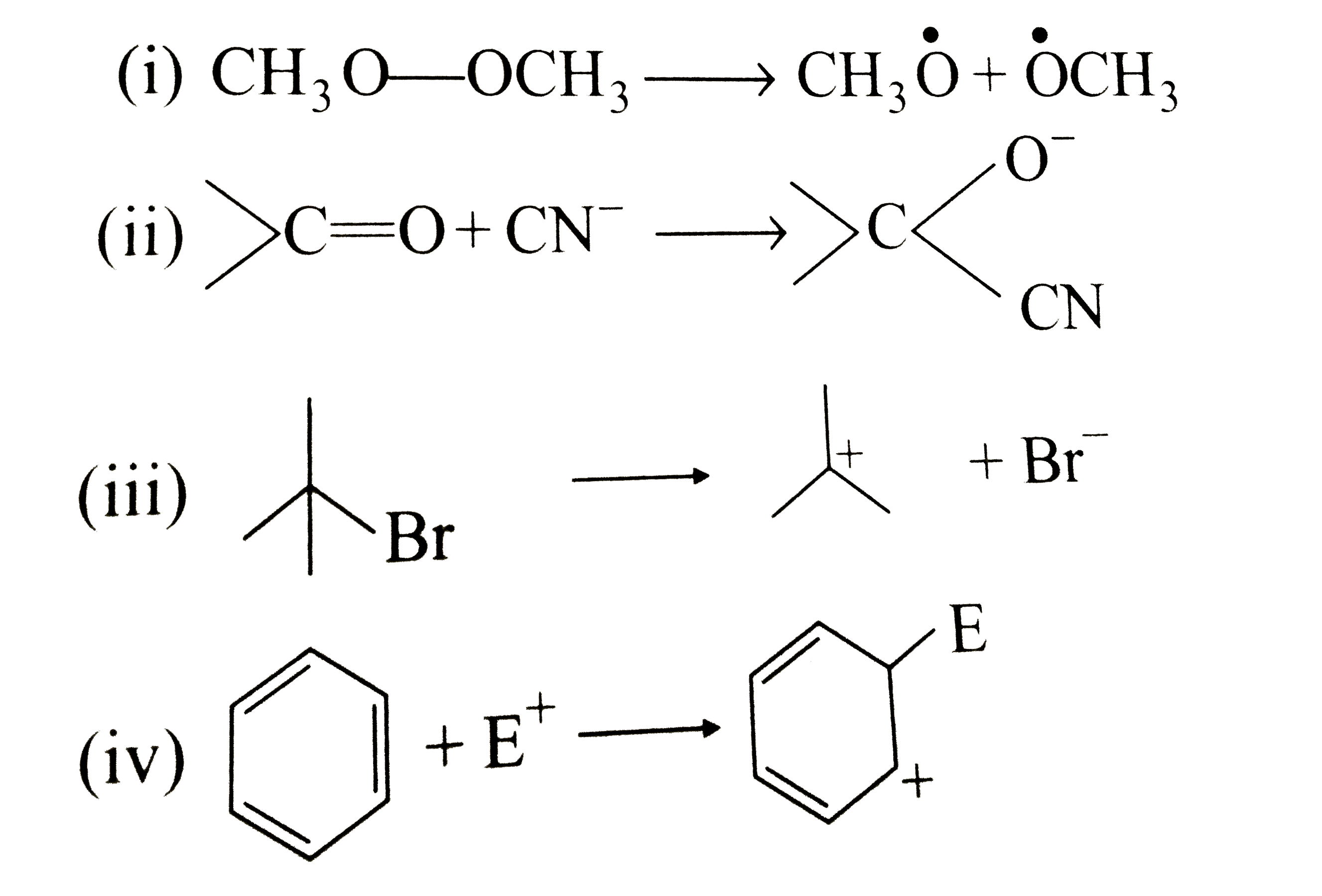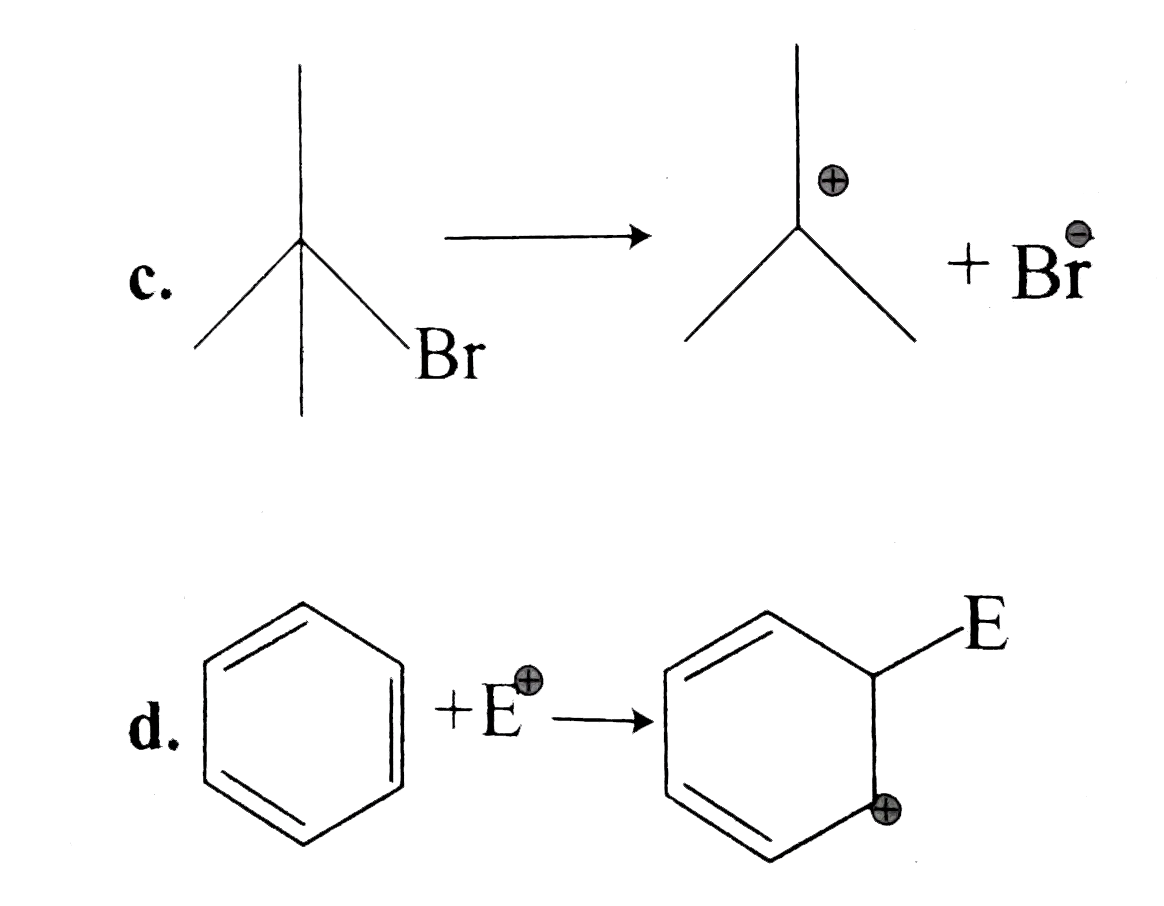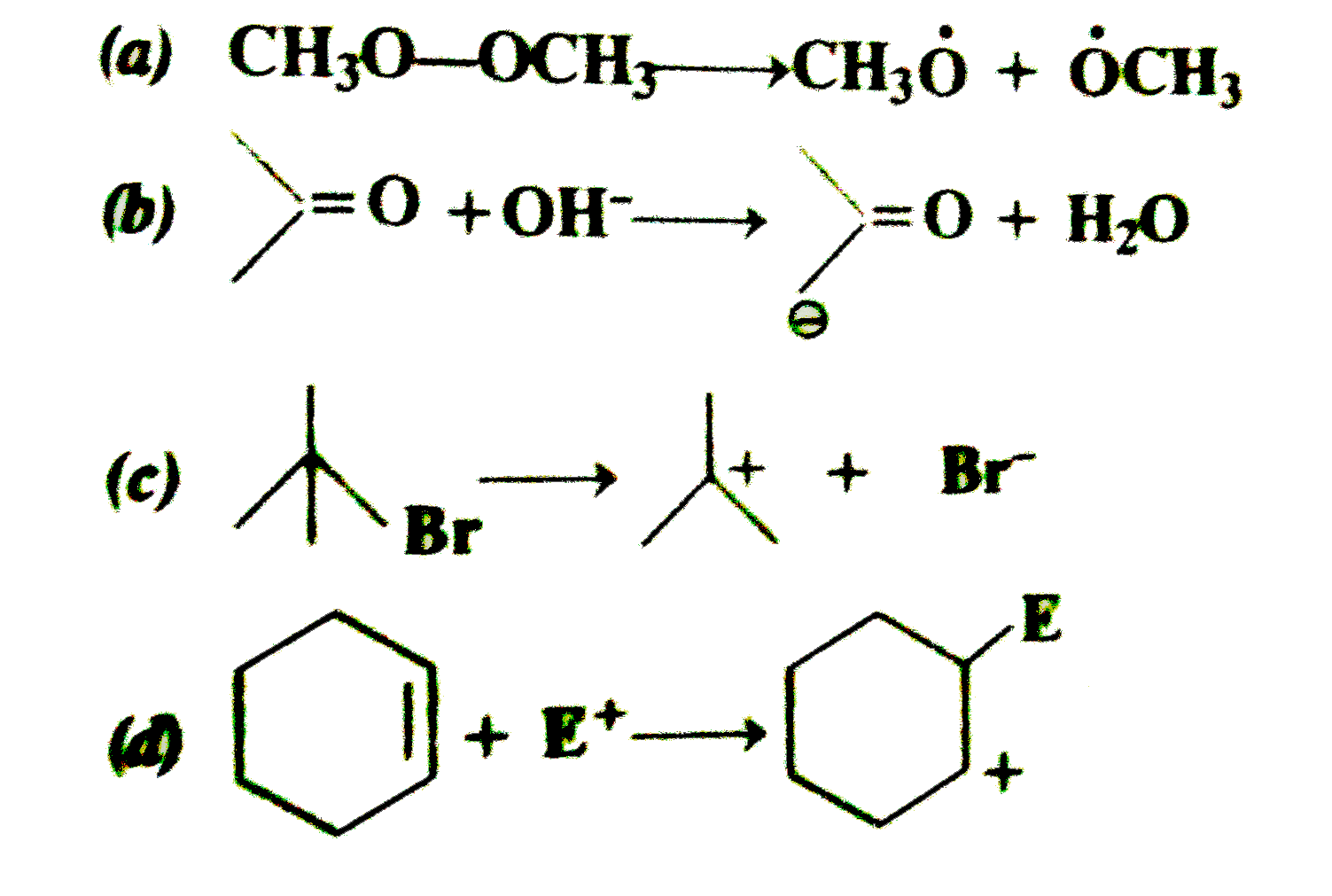For the following bond cleavages use curved-arrows to show the electron flow and classify each as homolytic or heterolytic fission. Identify reactive intermediate produced as free radical, carbocation and carbanion ?

Topper's Solved these Questions
- SAMPLE PAPER-8BOOK - FULL MARKSCHAPTER - SAMPLE PAPER-8EXERCISE - Part-IV
10 Videos
- SAMPLE PAPER-8BOOK - FULL MARKSCHAPTER - SAMPLE PAPER-8EXERCISE - Part-II
9 Videos
- SAMPLE PAPER 2 (SOLVED)BOOK - FULL MARKSCHAPTER - SAMPLE PAPER 2 (SOLVED)EXERCISE - PART-IV
10 Videos
- SOLUTIONS BOOK - FULL MARKSCHAPTER - SOLUTIONS EXERCISE - ADDITIONAL QUESTIONS SOLVED - NUMERICAL PROBLEMS
15 Videos
Similar Questions
For the following bond cleavages, use curved-arrows to show the electron flow and classify each as homolysis or heterolysis. Identify reactive intermediate produced as free radical, carbocation and carbanion.

View SolutionFor the following bond cleavages, use curved arrows to show the electron flow and classify each as homolysis or heterolysis. Identify reactive intermediate produced during the fission.

View Solution
Knowledge Check
Heterolytic fission of C—Cl bond produces
two free radicals
two carbonium ions
two carbanions
one cation and one anion.Atwo free radicalsBtwo carbonium ionsCtwo carbanionsDone cation and one anion.Passage
Organic compounds mainly consist of covalent bonds. The electron pair in these covalent bonds may undergo displacement either of their own or under the influence of other species. The cleavage of covalent bond between two atoms takes place in homolytic or heterolytic fashion. The homolytic fission results into free radicals while heterolytic fission results into carbocations and carbanions. These are also called reaction intermediates and are attacked by electrophiles and nucleophiles. The electrophiles seek electron rich sites while nucleophiles seek electron deficient sites.
Answer the followings Questions :
The most stable free radical among the following isAC6H5CH2⋅CH2BC6H5⋅CHCH3CCH3⋅CH2DCH3⋅CHCH3Passage
Organic compounds mainly consist of covalent bonds. The electron pair in these covalent bonds may undergo displacement either of their own or under the influence of other species. The cleavage of covalent bond between two atoms takes place in homolytic or heterolytic fashion. The homolytic fission results into free radicals while heterolytic fission results into carbocations and carbanions. These are also called reaction intermediates and are attacked by electrophiles and nucleophiles. The electrophiles seek electron rich sites while nucleophiles seek electron deficient sites.
Answer the followings Questions :
The most stable carbanion among the following isA B
B C
C D
D
For the following bond cleavages, use curved-arrow to show the electron flow and classify each as homolysis or heterolysis. Identify intermediate products as free radical, carbocation, and carbanion.
(a) CH3O−OCH3→CH3.O+.OCH3
 .
.
View SolutionFor the following bond cleavages, use curved-arrow to show the electron flow and classify each as homolysis or heterolysis. Identify intermediate products as free radical, carbocation, and carbanion.
(a) CH3O−OCH3→CH3.O+.OCH3
 .
.
View SolutionClassify each of the following as homolysis or heterolysis. Identify the reaction intermediates produced , as free radical, carbocation and carbanion.

View SolutionClassify each of the following as homolysis as homolysis or heterolysis. Identify the reaction intermediates produced , as free radical, carbocation and carbanion.

View SolutionPassage
Organic compounds mainly consist of covalent bonds. The electron pair in these covalent bonds may undergo displacement either of their own or under the influence of other species. The cleavage of covalent bond between two atoms takes place in homolytic or heterolytic fashion. The homolytic fission results into free radicals while heterolytic fission results into carbocations and carbanions. These are also called reaction intermediates and are attacked by electrophiles and nucleophiles. The electrophiles seek electron rich sites while nucleophiles seek electron deficient sites.
Answer the followings Questions :
Which of the following is most stable carbocation ?
View Solution

